|
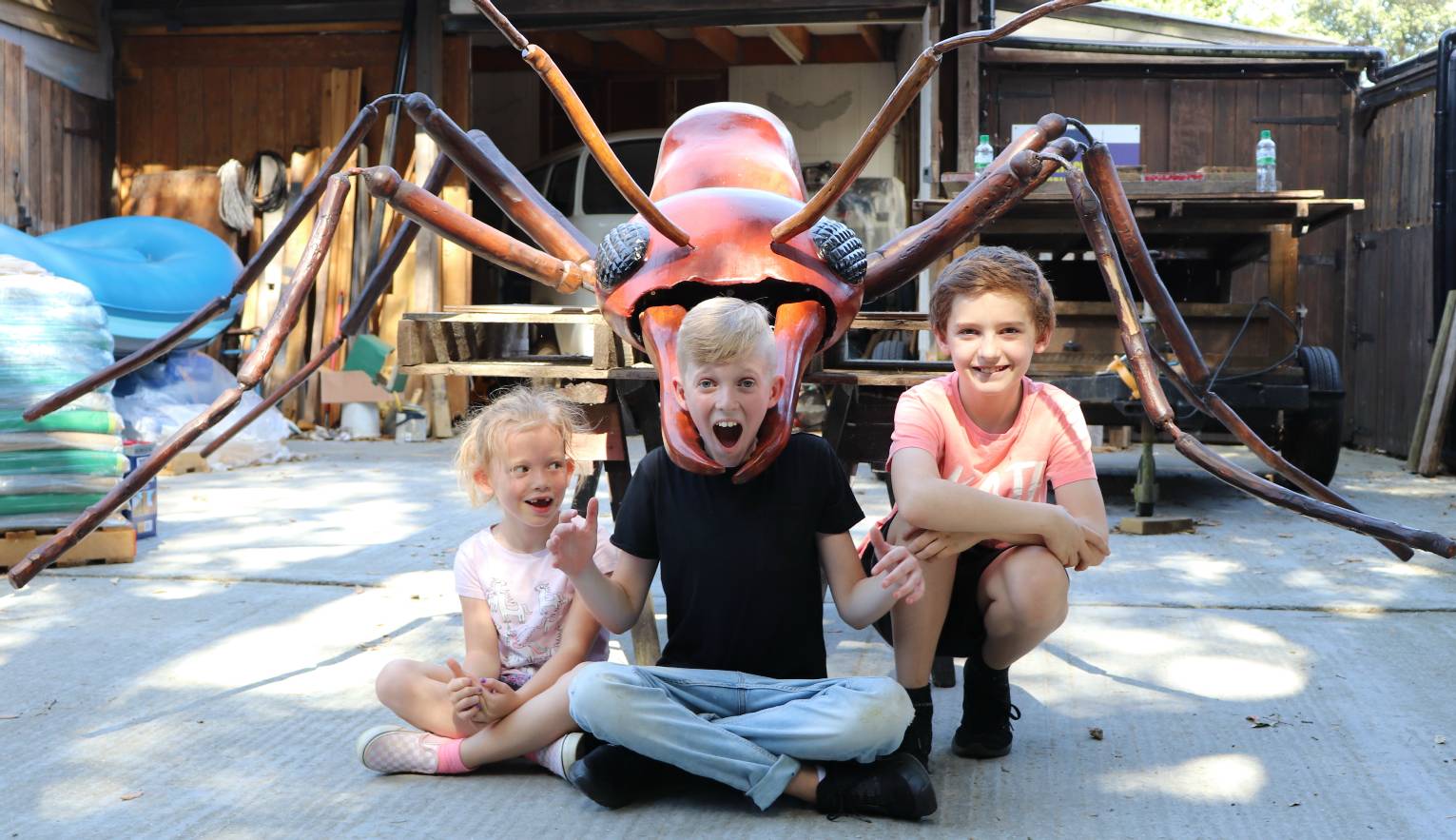
Some
of Jimmy Watson's friends, with the Magic Dinobot
SCI-FI
MOVIE
Big Hero 6 is a 2014 American computer-animated superhero film produced by Walt Disney Animation Studios and released by Walt Disney Studios Motion Pictures. The 54th film produced by the studio, it is loosely based on the Marvel Comics superhero team of the same name created by Man of Action. It was directed by Don Hall and Chris Williams from a screenplay by Jordan Roberts, Robert L. Baird, and Daniel Gerson, and produced by Roy Conli. The film stars the voices of Ryan Potter, Scott Adsit, Daniel Henney, T.J. Miller, Jamie Chung, Damon Wayans Jr., Genesis Rodriguez, James Cromwell, Maya Rudolph, and Alan Tudyk. Big Hero 6 tells the story of Hiro Hamada, a young robotics prodigy, and Baymax, his late-brother Tadashi's healthcare-provider robot, who form a superhero team to combat a masked villain who is responsible for Tadashi's death.
Big Hero 6 is the first Disney animated film to feature Marvel Comics characters, whose parent company was acquired by the Walt Disney Company in 2009. Walt Disney Animation Studios created new software technology to produce the film's animated visuals.
Big Hero 6 premiered at the 27th Tokyo International Film Festival on October 23, 2014, and at the Abu Dhabi Film Festival on October 31; it then premiered at the El Capitan Theatre in Los Angeles on November 4, and was released in the United States on November 7. The film received positive reviews from critics, with praise for the animation, action sequences, pacing, entertainment value, heart, and emotional weight. It grossed over $657.8 million worldwide and became the highest-grossing animated film of 2014. Big Hero 6 received several awards and nominations: seven nominations for Annie Awards (winning one) and a Golden Globe. At the 87th Academy Awards, the film won Best Animated Feature.
A television series, which continues the story of the film, aired from 2017 to 2021 on Disney Channel and Disney XD. A two-season short series, Baymax Dreams, premiered in 2018. Another series, Baymax!, premiered on Disney+ on June 29, 2022.
Big Hero 6 earned $222.5 million in North America and $435.3 million in other territories for a worldwide estimated total of $657.8 million. Calculating in all expenses, Deadline estimated that the film made a profit of $187.34 million. Worldwide, it is the highest-grossing animated film of 2014, and one of the highest-grossing animated films of all time. By grossing over $500 million worldwide, it became the fourth Disney release of 2014 to do so; the other titles being Guardians of the Galaxy, Maleficent, and Captain America: The Winter Soldier.
VOICE
CAST
- Scott Adsit as Baymax, an inflatable robot built by Tadashi as a medical assistant. Hall said, "Baymax views the world from one perspective – he just wants to help people, he sees Hiro as his patient". Producer Roy Conli said "The fact that his character is a robot limits how you can emote, but Scott was hilarious. He took those boundaries and was able to shape the language in a way that makes you feel Baymax's emotion and sense of humor. Scott was able to relay just how much Baymax cares".
- Ryan Potter as Hiro Hamada, a 14-year-old robotics prodigy. Speaking of the character, co-director Don Hall said "Hiro is transitioning from boy to man, it's a tough time for a kid and some teenagers develop that inevitable snarkiness and jaded attitude. Luckily Ryan is a very likeable kid. So no matter what he did, he was able to take the edge off the character in a way that made him authentic, but appealing".
- Daniel Henney as Tadashi Hamada, Hiro's older brother and Baymax's creator. On Tadashi and Hiro's relationship, Conli said "We really wanted them to be brothers first. Tadashi is a smart mentor. He very subtly introduces Hiro to his friends and what they do at San Fransokyo Tech. Once Hiro sees Wasabi, Honey, Go Go, and Fred in action, he realizes that there's a much bigger world out there that really interests him".
- T.J. Miller as Fred, a comic-book fan and slacker who is also a team mascot at San Fransokyo Institute of Technology. Speaking of Miller, co-director Chris Williams said "He's a real student of comedy. There are a lot of layers to his performance, so Fred ended up becoming a richer character than anyone expected", both literally and metaphorically.
- Jamie Chung as Go Go, a tough, athletic student who specializes in electromagnetics. Hall said "She's definitely a woman of few words. We looked at bicycle messengers as inspiration for her character".
- Damon Wayans Jr. as Wasabi, a smart, slightly neurotic youth who specializes in lasers. On the character, Williams said "He's actually the most conservative, cautious—he [sic] the most normal among a group of brazen characters. So he really grounds the movie in the second act and becomes, in a way, the voice of the audience and points out that what they're doing is crazy".
- Genesis Rodriguez as Honey Lemon, a chemistry enthusiast at San Fransokyo Institute of Technology. Williams said "She's a glass-is-half-full kind of person. But she has this mad-scientist quality with a twinkle in her eye – there's more to Honey than it seems". Rodriguez reprised her role in the Latin American Spanish dubbing of the movie.
- James Cromwell as Robert Callaghan / "Yokai", the head of a robotics program at San Fransokyo Institute of Technology who becomes an extremely powerful masked supervillain, who plots revenge against Krei.
- Alan Tudyk as Alistair Krei, a pioneer entrepreneur, tech guru, and the CEO of Krei Tech and is always on the hunt for the next big thing.
- Maya Rudolph as Cass, Hiro and Tadashi's aunt and guardian.
- Katie Lowes as Abigail Callaghan, the daughter of Professor Callaghan and a test pilot for Krei Tech.
- Daniel Gerson as Desk Sergeant Gerson, the desk sergeant for the San Fransokyo Police Department.
- Paul Briggs as Yama, a notorious gangster who seeks revenge after Hiro defeats his robot in a clandestine robot fight with illegal betting.
- David Shaughnessy as Heathcliff, Fred's family butler.
- Billy Bush as Newscaster
- Stan Lee as Fred's dad, who appears during the tour of Fred's house in a family portrait and briefly appears at the end of the credits.
MOVIE PLOT
In the futuristic city of San Fransokyo (a portmanteau of San Francisco and Tokyo), 14-year-old high school graduate and robotics prodigy Hiro Hamada is competing in underground robot fights for a living, constantly dodging violent threats from his bitter, defeated opponents. In an effort to get Hiro out of this dangerous lifestyle, his older brother Tadashi takes him to his research lab at the San Fransokyo Institute of Technology. Hiro meets Tadashi's friends Go Go, Wasabi, Honey Lemon, and Fred, as well as his creation Baymax — an inflatable healthcare robot — and his mentor, Professor Robert Callaghan. Inspired, Hiro gives up his robot fighting habits and applies to the university, impressing the school's showcase with his project: a swarm of tiny microbots that can link together in any configuration using a neural transmitter. Callaghan accepts him into the school, and Hiro rejects tech giant Alistair Krei's offer to buy the microbots. When a fire erupts moments later, Tadashi rushes inside to save Callaghan, but dies when the building collapses after an explosion resulting from the fire.
Two weeks later, Hiro, who has isolated himself from his aunt and friends, inadvertently activates Baymax, and they follow his only remaining microbot to an abandoned warehouse, where they discover someone has been mass-producing the microbots. A man wearing a Kabuki mask attacks them with the microbot swarm, but they escape, and Hiro suspects the masked man set the fire to cover his theft of the microbots. Determined to avenge his brother's death, Hiro equips Baymax with armor and a chip programmed with martial arts moves for defense, and they return to find the warehouse empty. At the nearby port, Baymax summons Tadashi's friends, and the group is attacked by the masked man but escapes after driving into a lake. Once they resurface, the group stops at Fred's mansion, where Hiro upgrades Baymax's armor and he and the others weaponize their various inventions to take on the masked man, whom they suspect is Krei.
They track the masked man to Krei's abandoned island lab, which they discover was used for teleportation research until a test pilot disappeared inside a portal, leading the government to shut down Krei's experiment and seal off the island. The masked man suddenly attacks the group, but Hiro knocks off the man's mask, revealing him to be Callaghan, who was thought to be dead. Callaghan reveals that he had actually escaped, using the microbots to shield himself from the flames. Shocked and enraged that Tadashi died in vain, Hiro removes Baymax's healthcare chip and orders him to kill Callaghan, but his friends intervene and Honey re-installs the chip at the last second. Callaghan escapes with the microbots, and Hiro, angered by his friends' prevention of his revenge on Callaghan, flies off with Baymax, still intent on avenging Tadashi.
When they return home, Hiro tries to remove the healthcare chip again, but Baymax blocks his access port and shows him footage of Tadashi's numerous tests during Baymax's development, reminding Hiro that his brother's goal was to help others, not harm them. Hiro apologizes to Baymax and his friends; through research, they discover the lost test pilot was Callaghan's daughter, Abigail.
Having stolen the microbots to seek revenge on Krei, Callaghan reactivates the teleportation portal to destroy Krei and his headquarters during a ceremony, but Hiro, Baymax, and their friends defeat Callaghan and save Krei. Baymax detects Abigail alive inside the portal, and despite Krei’s attempts to keep them away from the portal because of its instability, Hiro and Baymax leap through and find Abigail trapped in hyper-sleep in her rocket. While helping Hiro transport Abigail out of the portal, Baymax is struck by debris, disabling his thrusters and forcing him to fire his rocket fist, leaving him behind while propelling Hiro and Abigail back through the portal before it is destroyed. Abigail regains consciousness, and Callaghan is arrested.
Hiro joins his friends at the university, and discovers Baymax's healthcare chip clenched in the rocket fist. He rebuilds Baymax, and they and their friends continue to protect the city as a team of high-tech superheroes, known as Big Hero 6.
In a post-credits scene, Fred stumbles upon a secret superhero lair in his family mansion and is reunited with his father, who tells him they have a lot to talk about.
MOVIE PRODUCTION
After the Walt Disney Company's acquisition of Marvel Entertainment in 2009, CEO Bob Iger encouraged the company's divisions to explore Marvel's properties for adaptation concepts. By deliberately picking an obscure title, it would give them the freedom to come up with their own version. While directing Winnie the Pooh (2011), director Don Hall was scrolling through a Marvel database when he stumbled upon Big Hero 6, a comic he had never heard of before. "I just liked the title," he said. He pitched the concept to John Lasseter in 2011, as one of five ideas for possible productions for Walt Disney Animation Studios, and this particular idea "struck a chord" with Lasseter, Hall, and Chris Williams.
In June 2012, Disney confirmed that Walt Disney Animation Studios was adapting Marvel Comics' series and that the film had been commissioned into early stages of development. Because they wanted the concept to feel new and fresh, head of story Paul Briggs (who also voices Yama in the
film) only read a few issues of the comic, while screenwriter Robert L. Baird admitted he had not read the comic at all.
Big Hero 6 was produced solely by Walt Disney Animation Studios, although several members of Marvel's creative team were involved in the film's production including Joe Quesada, Marvel's chief creative officer, and Jeph Loeb, head of Marvel Television. According to an interview with Axel Alonso by Comic Book Resources, Marvel did not have any plans to publish a tie-in comic. Disney planned to reprint the Marvel version of Big Hero 6 themselves, but reportedly Marvel disagreed. They eventually came to agreement that Yen Press would publish the Japanese manga version of Big Hero 6 for Disney.
Conversely, Lasseter dismissed the idea of a rift between the two companies, and producer Roy Conli stated that Marvel allowed Disney "complete freedom in structuring the story". Disney Animation Studio President Andrew Millstein stated: "Hero is one example of what we've learned over the years and our embracing some of the Pixar DNA." Regarding the film's story, Quesada stated, "The relationship between Hiro and his robot has a very Disney flavor to it ... but it's combined with these Marvel heroic arcs." The production team decided early on not to connect the film to the Marvel Cinematic Universe and instead set the film in a stand-alone universe.
With respect to the design of Baymax, Hall mentioned in an interview, "I wanted a robot that we had never seen before and something to be wholly original. That's a tough thing to do, we've got a lot of robots in pop culture, everything from The Terminator to WALL-E to C-3PO on down the line and not to mention Japanese robots, I won't go into that. So I wanted to do something original." Even if they did not yet know what the robot should look like, artist Lisa Keene came up with the idea that it should be a huggable robot. Other sources of inspiration cited by the team include Japanese anime, such as Hayao Miyazaki films, including Spirited Away (2001) and The Wind Rises (2013), and Pokémon, as well as Shogun Warriors toys. Mecha designer Shigeto Koyama, who previously did design work for mecha anime such as Gunbuster 2, Eureka Seven, Gurren Lagann, and Rebuild of Evangelion, worked on the concept design for Baymax.
Early on in the development process, Hall and the design team took a research trip to Carnegie Mellon University's Robotics Institute, where they met a team of DARPA-funded researchers who were pioneering the new field of 'soft robotics' using inflatable vinyl, which ultimately inspired Baymax's inflatable, vinyl, truly huggable design. Hall stated that "I met a researcher (Chris Atkeson) who was working on soft robots. ... It was an inflatable vinyl arm and the practical app would be in the healthcare industry as a nurse or doctor's assistant. He had me at vinyl. This particular researcher went into this long pitch but the minute he showed me that inflatable arm, I knew we had our huggable robot." Hall stated that the technology "will have potential probably in the medical industry in the future, making robots that are very pliable and gentle and not going to hurt people when they pick them up."
Hall mentioned that achieving a unique look for the mechanical armor took some time and "just trying to get something that felt like the personality of the character" Williams stated, "A big part of the design challenge is when he puts on the armor you want to feel that he's a very powerful intimidating presence ... at the same time, design-wise he has to relate to the really adorable simple vinyl robot underneath." Baymax's face design was inspired by a copper suzu bell that Hall noticed while at a Shinto shrine.
According to Conli, Lasseter initially disliked Baymax's description (while low on battery power) of Hiro's cat as a "hairy baby", but Williams kept the line in anyway, and at the film's first test screening, Lasseter admitted that Williams was correct.
According to Williams, Baymax was originally going to be introduced rather late in the film, but then story artist John Ripa conceived of a way for Baymax to meet Hiro much earlier. The entire film became much stronger by establishing the relationship between Hiro and Baymax early on, but the filmmakers ended up having to reconstruct "a fair amount of the first act" in order to make that idea work.
About ninety animators worked on the film at one point or another; some worked on the project for as long as two years. In terms of the film's animation style and settings, the film combines Eastern world culture (predominantly Japanese) with Western world culture (predominantly California). In May 2013, Disney released concept art and rendered footage of San Fransokyo from the film. San Fransokyo, the futuristic mashup of San Francisco and Tokyo, was described by Hall as "an alternate version of San Francisco. Most of the technology is advanced, but much of it feels retro … Where Hiro lives, it feels like the Haight. I love the Painted ladies. We gave them a Japanese makeover; we put a cafe on the bottom of one. They live above a coffee shop." The house that Hiro's family lives in is based on a Victorian house at the corner of Haight Street and Masonic Avenue in the Haight-Ashbury.[69] According to production designer Paul Felix, "The topography is exaggerated because what we do is caricature, I think the hills are 1+1⁄2 times exaggerated. I don't think you could really walk up them ... When you get to the downtown area, that's when you get the most Tokyo-fied, that pure, layered, dense kind of feeling of the commercial district there. When you get out of there, it becomes more San Francisco with the Japanese aesthetic. … (It's a bit like) Blade Runner (1982), but contained to a few square blocks. You see the skyscrapers contrasted with the hills."
The reason why Disney wanted to merge Tokyo (which is where the comic book version takes place) with San Francisco was partly because San Francisco had not been used by Marvel before, partly because of all the city's iconic aspects, and partly because they felt its aesthetics would blend well with Tokyo. The filmmakers' idea was that San Fransokyo is based on an alternative history in which San Francisco was largely rebuilt by Japanese immigrants in the aftermath of the 1906 earthquake, although this premise is not stated in the film.
To create San Fransokyo as a detailed digital simulation of an entire city, Disney purchased the actual assessor data for the entire city and county of San
Francisco. The final city contains over 83,000 buildings and 100,000 vehicles.
A software program called Denizen was used to create over 700 distinctive characters that populate the city. Another one named Bonzai was responsible for the creation of the city's 250,000 trees, while a new rendering system called Hyperion offered new illumination possibilities, like light shining through a translucent object (e.g. Baymax's vinyl covering). Pixar's RenderMan was considered as a "Plan B" for the film's rendering, if Hyperion was not able to meet production deadlines.
Development on Hyperion started in 2011 and was based upon research into multi-bounce complex global illumination originally conducted at Disney Research in Zürich. Disney, in turn, had to assemble a new super-computing cluster just to handle Hyperion's immense processing demands, which consists of over 2,300 Linux workstations distributed across four data centers (three in Los Angeles and one in San Francisco). Each workstation, as of 2014, included a pair of 2.4 GHz Intel Xeon processors, 256 GB of memory, and a pair of 300 GB solid-state drives configured as a RAID Level 0 array (i.e., to operate as a single 600 GB drive). This was all backed by a central storage system with a capacity of five petabytes, which holds all digital assets as well as archival copies of all 54 Disney Animation films. Cinematographer Robert Richardson was brought on as a visual consultant to assist in the creation of realistic lighting.
The emotional climax takes place in the middle of a wormhole portal, which is represented by the stylized interior of a mandelbulb.
The post-credits scene was only added to the film in August 2014, late in production, after Hall and his crew went to see Marvel Studios' Guardians of the Galaxy (2014). He stated that "[i]t horrified us, that people were sat waiting for an end credits thing, because of the Marvel DNA. We didn't want people to leave the movie disappointed."
MOVIE RECEPTION
Review aggregation website Rotten Tomatoes reports an approval rating of 90% based on 229 reviews and an average rating of 7.4/10. The site's consensus states: "Agreeably entertaining and brilliantly animated, Big Hero 6 is briskly-paced, action-packed, and often touching." Metacritic, which assigns a normalized rating out of 100 from top reviews from mainstream critics, has calculated a score of 74 based on 38 reviews, indicating "generally favorable reviews". Audiences polled by CinemaScore gave the film an average grade of "A" on an A+ to F scale.
Michael O'Sullivan of The Washington Post gave the film 3.5/4 stars, writing that "The real appeal of Big Hero 6 isn't its action. It's the central character's heart." Maricar Estrella of Fort Worth Star-Telegram gave the film 5 stars, saying it "offers something for everyone: action, camaraderie, superheroes and villains. But mostly, Baymax offers a compassionate and healing voice for those suffering, and a hug that can be felt through the screen." Peter Travers of Rolling Stone gave the film 3 out of 4 stars, stating, "The breakthrough star of the season is here. His name is Baymax and he's impossible not to love. The 3-D animated Big Hero 6 would be a ton less fun without this irresistible blob of roly-poly, robot charisma." Kofi Outlaw of Screen Rant gave the film 4 out of 5 stars or "excellent", explaining that "Big Hero 6 combines Disney wonder and charm with Marvel awe and action to deliver a film that exhibits the best of both studios." Alonso Duralde of The Wrap gave the film a positive review, calling it "sweet and sharp and exciting and hilarious" and says that the film "comes to the rescue of what's become a dreaded movie trope—the origin story—and launches the superhero tale to pleasurable new heights." Calvin Wilson of St. Louis Post-Dispatch gave the film 3.5 of 4 stars, writing that "the storytelling is solid, propelled by characters that you come to care about. And that should make Big Hero 6 a big hit."
Bill Goodykoontz of The Arizona Republic gave the film a positive review, writing, "Directors Don Hall and Chris Williams have made a terrific movie about a boy (Ryan Potter) and his robot friend, who seek answers to a deadly tragedy," calling it an "unexpectedly good treat". Soren Anderson of The Seattle Times gave the film 3.5 out of 4 stars, saying that "Clever, colorful, fast on its feet, frequently very funny and sweet (but not excessively so), Big Hero 6 mixes its myriad influences into a final product that, while in no way original, is immensely entertaining." Michael Rechtshaffen of The Hollywood Reporter gave the film a positive review, saying that "the funny and heartwarming story about the bond between a teen tech geek and a gentle robot represents another can't-miss proposition by Walt Disney Animation Studios." Jon Niccum of The Kansas City Star gave the film 3.5 out of four stars, writing that while it "may hit a few familiar beats inherent to any superhero 'origin story,'" it is still "the best animated film of the year, supplying The Incredibles-size adventure with a level of emotional bonding not seen since The Iron Giant", and that it "never runs low on battery power". Elizabeth Weitzman of the Daily News gave the film 4 out of 5 stars, calling it a "charming animated adventure", saying that with "appealing 3D animation" and a smart and "sharp story and script", it is "one of the rare family films that can fairly boast of having it all: humor, heart and huggability". Rafer Guzmán from Newsday gave the film 3 out of 4 stars, saying that "Marvel plus Disney plus John Lasseter equals an enjoyable jumble of kid-approved action", with "rich, vivid colors and filled with clever details".

THE MAGIC DINOBOT
- From Jameson Hunter, an
original short story with potential for adaptation as a TV series idea, germinated in 2016.
While attending a school
in Hailsham, Jimmy dreams of building a giant
robot ant as a special project, then one day his dreams come true when the robot he
has built is transformed into a living, breathing, companion. NOTE:
This story is Copyright © Jameson Hunter
Ltd, March 30 2016. All rights
reserved. You will need permission from the author to reproduce the book
cover on the right or any part of the story published on this page. JIMMY
WATSON
-
His mother, Marion, teases her son about his dreams to build a large robot ant with a
drawing of her son riding on the ant's back. Then it comes true.
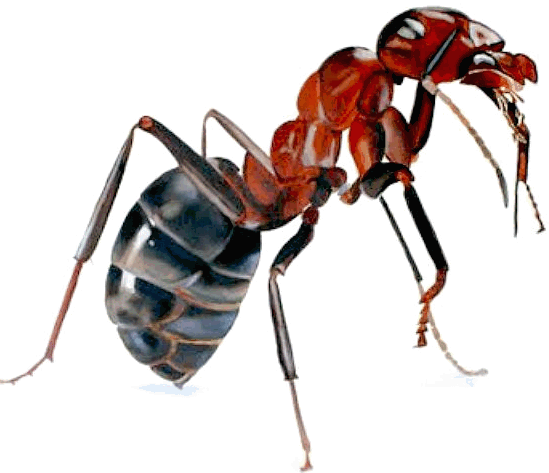
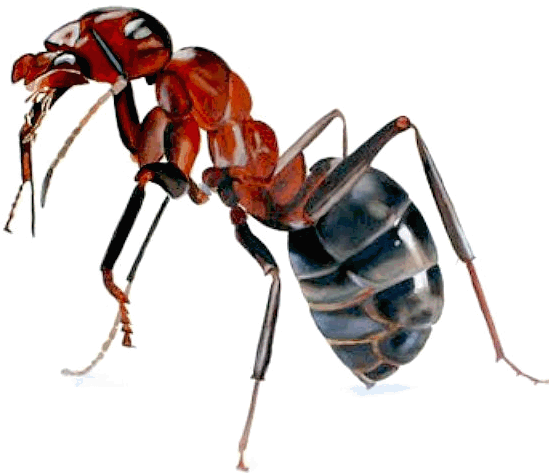
CHAPTERS
- CHARACTERS
- FILMS
- MAGIC
- PLOT
OUTLINE - SECTASAUR
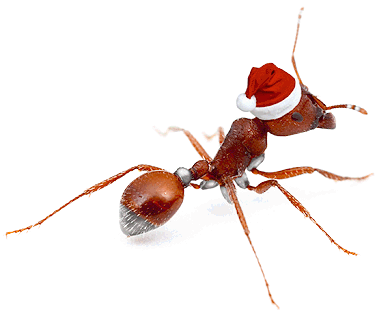
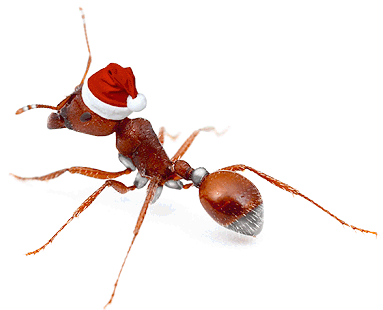
|





